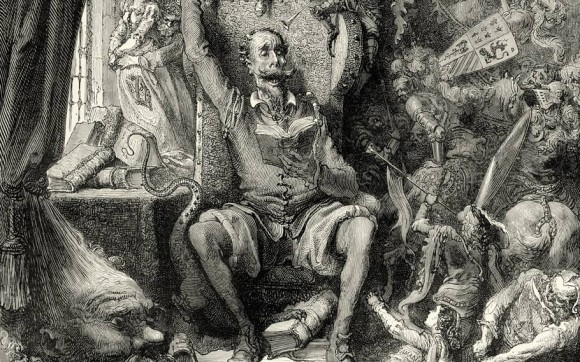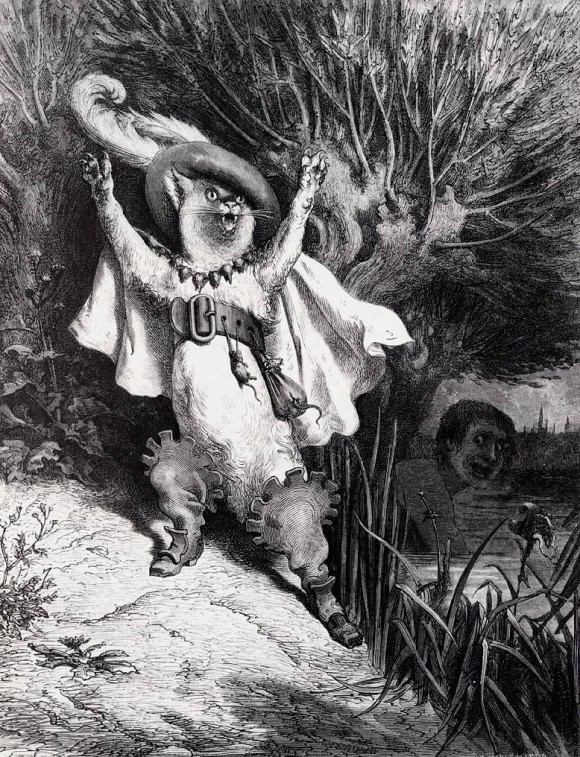

Book Review: ‘Gustave Doré: Master of Imagination’

Gustave Doré (1832-1883): Master of Imagination
Edited by Philippe Kaenel.
(Flammarion, 336 pages, $60)
Order: $39.25 on Amazon
Although I haven’t seen the exhibit “Gustave Doré (1832-1883): Master of Imagination,” currently at the National Gallery of Canada, I can say that the catalog is beautiful, informative, and opened up Doré’s career in ways I had not anticipated.
Doré was a popular cartoonist while still in his teens, then made a name for himself as the outstanding illustrator of his time—someone who, in my opinion, has never been equalled. No one else has created so many iconic images and shaped the way we imagine other places and fantastic beings. It’s a testament to his skill that his illustrations for Don Quixote (1863), The Bible (1866), The Rime of the Ancient Mariner (1876), and others, are still in print. But Doré wanted to be taken seriously as an artist, and his ego would accept nothing less. He took to painting, then sculpture, with considerable fervor and limited success.

The section “Cinema and the Work of Doré” is a pleasant surprise. While I wish it was longer, it would have been just as easy to fob off Doré’s legacy on filmmakers with a couple of paragraphs. A little more detail would help—Doré’s influence on Walt Disney is mentioned several times throughout the book, but no specific instances are cited. King Kong (1933) is rightly given its due, as it is filled with Doré-esque touches courtesy of special effects master Willis O’Brien (and, unmentioned in the book, artists Byron Crabbe and Mario Larrinaga, whose production art and glass paintings brought to life the lush forests and craggy mountains of Skull Island).
Even broader than the Disney references, Ray Harryhausen’s entire body of work is declared Doré-influenced—arguable, but generally true. Terry Gilliam has been forthright about his admiration for Doré and his intention to “make Doré come alive.” Now that Gilliam’s variation on Don Quixote is once again in the works, he may be able to further realize that intent. Doré’s effect on fantasy art and comics goes largely unmentioned, save for an interview with contemporary French comics maestro Philippe Druillet, complete with examples.

Periodically a notable work is given its own short essay, to examine it in full detail. Baldine Saint Girons’s appreciation of Doré’s painting, “Lake in Scotland after a Storm” (1875-78), helpfully reminds us that works of art are not merely meant to be understood, but to inspire and move us. It’s amazing how many art show catalogs forget this basic experience of art.
Editor Philippe Kaenel has gathered a wide range of experts from Western Europe, North America, and Russia to cover every aspect of Doré’s professional life, and enough of his personal life to fill out the story. There’s plenty of scholarship for academics to dig through, yet it never becomes dry or jargon-heavy. The reproduction of the art is very good, always important when dealing with an artist who used chiaroscuro as much as Doré. Perhaps a few more examples of other artist’s work could have been included to provide context (Edouard Manet’s illustrations for Poe’s “The Raven,” for example) but that’s a pretty small quibble.
A cute promotional video by Lorenzo Papace and Vincent Pianina, utilizing paper cut-out animation, was made for the exhibition when it was shown at the Musée d’Orsay in Paris:
“Gustave Doré (1832-1883): Master of Imagination” was organized by the National Gallery of Canada and the Musee d’Orsay, Paris. It runs until September 14 at the National Gallery of Canada in Ottawa. The book is published by Flammarion in conjunction with the museums .
